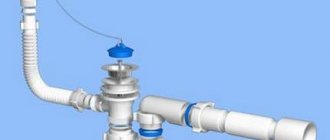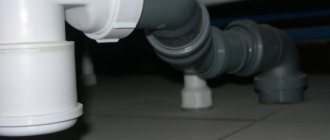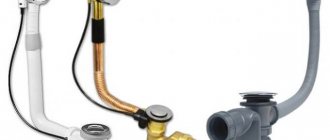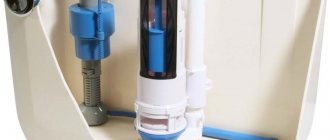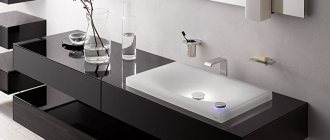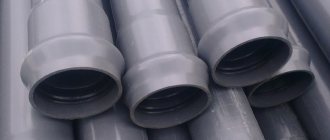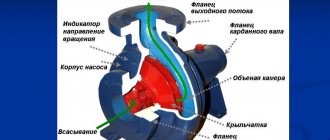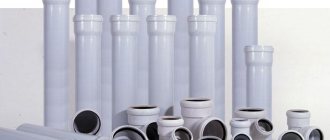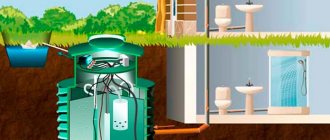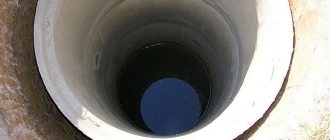Are you faced with the fact that you don’t know how to install a drain in the bathroom? In the minds of many people, only a professional plumber with a large number of tools can perform such work. However, not everything is as complicated as it might seem. After reading the material presented, you will understand that installing a drain can be done with your own hands.
Siphons can be of different heights. Therefore, the first thing you need to do is measure the distance from the bottom of the bath to the floor. It must be at least 15 cm. If the bathtub has not yet been installed, then you need to install it and secure it firmly - it should not move.
Installation of bath siphons
The design of most siphons consists of two parts: 1) drain block; 2) overflow block.
- The drain pipe is used for direct drainage of water and is attached to the bottom of the bathtub bottom.
- The overflow block serves to protect against water overflowing over the edges of the bathtub, so the pipe opening is located on top not far from the edges.
A bathroom drain using a siphon ensures proper water circulation and also blocks unpleasant odors from the sewer. This design has 4 parts: a neck, a pipe, an overflow corrugated hose, a soft or hard pipe that directly connects to the sewer.
The neck is directly attached to the bottom of the bathtub on both sides using a metal screw, which tightly tightens the inner and outer parts. During installation, it is important to ensure tightness using a rubber seal. The overflow neck has a side outlet through which water flows in a stream under low pressure.
The siphon pipe has a curved shape, which ensures that a certain amount of water is always inside. This water barrier prevents the movement of odors from the sewer system. To effectively perform these functions, the volume of liquid must be at least 300-400 ml, since with a small volume of water it can be automatically sucked into the sewage system.
The corrugated hose drains excess water, preventing possible overflows from the top. However, due to the low pressure of liquids, it is not necessary to use crimp structures.
The connection to the sewer can be made using more reliable hard or soft corrugated tubes, which can be adjusted in length.
When assembling a complete structure, flat or conical gaskets, screws and union nuts are used. It is important to consider that the thinner part of the gasket should go into the adjacent pipe towards the sewer.
Today, the sanitary equipment market offers drainage structures for individual baths in three main varieties:
- conventional mechanical system with plug;
- semi-automatic bath siphon;
- automatic connection for bathtub.
Rules for installation work
Having experience installing a mechanical drain in a bathroom, you won’t need a circuit for a semi-automatic one - it is almost identical. Even without the skills, you can master it with your own hands, but first, it is advisable to read the instructions and documents that come with the kit.
The manufacturer's recommendations regarding the installation of the bathtub trim should be followed exactly. Otherwise, the device may not work or function incorrectly. It is not recommended to take on automatic systems: after installation without the participation of a specialist, the warranty on the device ceases to apply.
At the first stage, the old siphon, if any, is removed, and the insides of the pipe and the junction areas are thoroughly cleaned. Then the lower overflow is installed. A sealing collar is put on the outlet, after which it is placed against the drain opening.
Before installing the drain and overflow, it does not hurt to make sure that the bathtub is positioned correctly, stable and level and that the gap from the drain hole to the floor is at least 15 centimeters
Another gasket is placed on the inside of the hole, the lid with the grill is screwed on and secured with a screw. Cone-type cuffs are placed with the thick edge towards the nut, and the narrow edge towards the neck.
After checking that the connection is correct, tighten the screw with a screwdriver. The top overflow is installed using a similar method.
Tying under the bathtub is quite difficult. Most likely, you will have to take an awkward position to get to the right places. To fasten the inner and outer parts of the drain structure, it is advisable to work with a partner
The next stage is attaching the overflow to the drain. To do this, it is more convenient to use a flexible corrugated hose that stretches to a size that will easily fit into the pipe. Each joint is crimped with a nut and spacers.
Next, a glass is installed to form a water seal. Places for gaskets are first cleaned of defects with a file. The valve is also connected with a union nut with a flat or cone seal.
At the end, the siphon outlet is connected to the sewer with a drain pipe. This is done through the sealing collar or directly into the socket. To avoid leaks that occur due to cuff wear, they are treated with silicone lubricant.
When performing installation, do not use excessive physical force. Because of this, the strapping elements may burst, and you will have to buy new parts.
When the installation work is completed, you need to check the quality of the assembly by covering the drain with a stopper and opening the water. The floor under the bathroom is covered with paper, the drain and connections are inspected. When leaks are detected, the nuts are tightened.
Types of siphons depending on design
Depending on the design, there are the following types of these products.
Flat. The design of such a device allows for their installation in limited space. The main part of the device, in which a water seal is formed and debris accumulates, is located horizontally. In order to clean the flat bath siphon, it is necessary to partially dismantle it.
Flat siphon - ideal for installation in confined spaces
Pipe. Such devices are made from pipe sections of different lengths, joined in a certain sequence. Pipes in this design have sufficient rigidity. This bathroom siphon is more compact than the previous type, however, due to the lack of a compartment in which debris is concentrated, cleaning it is more difficult.
Bottled. This type is distinguished by the presence of a special compartment, which is shaped like a bottle (hence the name). Garbage is collected in this compartment, and there is also a water seal in it. Bottle siphons are quite large in size compared to other types, so their installation is only possible if there is enough free space under the bathtub. Such devices can be periodically cleaned without completely disassembling the structure, which is very convenient.
Corrugated. They are distinguished by the simplest design, which includes a “drain-overflow” type device and a soft pipe. The pipe can be bent in any desired direction. A corrugated siphon for a bathtub has one drawback - the rapid formation of a blockage. This is due to the fact that the ribbed walls trap foreign particles. In addition, connecting the overflow element often causes difficulties.
Connecting the bathtub to the sewer - main steps
A distinctive feature of all non-pressure sewer systems inside houses and apartments is the ability to install them and connect plumbing without special tools. This cannot be said about the situation if, for example, it is necessary to connect the bathtub to the water supply.
When carrying out sewer operations, you may need a hacksaw or a grinder with any disk for cutting pipes. To screw the siphon cups, a flat or Phillips screwdriver is required.
Types of siphons according to the method of water discharge
There are the following types of siphons according to the method of water discharge:
- manual;
- semi-automatic;
- automatic.
Automatic siphons are complex devices, but they make it easier to control the water level in the bathtub
Manual. The design of such devices is considered the simplest. These devices are equipped with a drain hole that is manually adjustable (opens and closes).
Semi-automatic. Semi-automatic devices at the manufacturing stage are equipped with a special plug with an additional cable. This plug is adjusted using a handle located outside the bathtub. As a rule, such a handle has two positions: directly draining water from the bathtub or placing a load on the overflow hole.
Automatic (click-clack devices). Such devices are the most complex in terms of execution. The automatic bathtub is able to independently regulate the water level in the bathtub bowl. In order to drain the water, in this case you just need to press the drain lid.
Important! Experts do not recommend installing automatic models yourself. This is due to the fact that their installation requires special knowledge and high precision, otherwise such a system will be ineffective.
Drain fittings
The standard kit includes two corrugated tubes of different diameters.
- A thin corrugation is placed at one end on the overflow fitting, and at the other end directly to the siphon. There is no pressure in this area, so there is no need for careful sealing. However, special attention should be paid to the installation of such connections.
- Through a corrugated tube of larger diameter, water is discharged from the siphon device into the sewer volume.
- A flexible hose simplifies installation, but for assembling fittings in difficult places, a more reliable hard plastic pipe is preferable.
Materials used for the manufacture of siphons
For the manufacture of siphons the following are used:
- plastic. Plastic devices are durable and low cost. It is optimal to install such equipment on a bathtub with a protective screen, since the appearance of the device is not aesthetic;
- metal: brass, bronze, chrome steel and so on. Metal siphons are suitable for acrylic bathtubs, especially those installed in the center of the bathroom. The devices, having an elegant and neat appearance, can serve as additional elements of room decor;
Siphon made of copper and brass
- cast iron. Siphons made of cast iron are intended exclusively for bathtubs made of the same material. Currently, they are practically not used, as they are large in weight and size, and also require high installation accuracy.
Device made of cast iron
If the siphon is not visible to users, then it is enough to install a plastic device.
Materials for the manufacture of drainage devices
The very first material from which drainage devices began to be made was an alloy of carbon and iron - cast iron. What are modern models made of?
Most often this is:
- Plastic. Devices made of plastic are characterized by a long service life and low cost. If you plan to cover the space under the bathroom with a protective screen, then a plastic siphon is what you need. Its simple appearance will not irritate you, and this inexpensive model will serve you faithfully and for a long time.
- Metal. In terms of their aesthetic properties, metal products have no competitors. Siphons are made from chrome steel, bronze, and brass. If you purchased an acrylic bathtub and plan to install it in the center of a spacious bathroom, then buy a metal siphon. This drainer looks luxurious and will serve as an additional decorative element to your bathroom. These models also have their drawbacks: dirt quickly accumulates on their internal surfaces, and cleaning can be difficult.
- Cast iron. Siphons made from cast iron can only be installed on cast iron bathtubs. Today they are difficult to find on sale, because this heavy and massive product requires jewelry precision during installation.
Who would have thought that all bathtub drains were like this? They were made of cast iron, were very heavy, and their installation could only be carried out by specialists
The general rule for choosing a siphon, based on the material it is made of, is this: if the siphon is visible, then preference should be given to an expensive metal model, and for hidden installation, cheap and practical plastic is better suited.
Bath Siphon Manufacturers
The best bath siphon is a high-quality device manufactured in compliance with all norms and regulations. It is more advisable to purchase siphons from well-known manufacturing companies that can guarantee the quality and long service life of the products. Such companies include:
- Geberit (Switzerland). The company, which began its activities in 1874, remains a leader in the plumbing market to this day. The organization's employees are constantly developing and implementing the latest devices necessary for a high standard of living for consumers. Products from the manufacturer are quite expensive, but have a high level of quality.
Installed Geberit siphon with PushControl system
- Ani plast (Russia). The company is a leading Russian manufacturer of plastic plumbing fixtures. Products manufactured by the company are annually certified and quality tested. The products are low in cost.
- Viega (Germany). The quality of products is controlled at all stages of production, starting with the supply of materials. All siphons are certified. The cost of the products is quite high, but the economic costs are justified by the long service life.
The video provides an overview of a semi-automatic siphon from Viega.
Manufacturers of modern siphons
Regardless of the siphon design you like, it is important that it is of high quality. And for this it is necessary that it be manufactured using modern equipment and new technologies, and during its production all existing standards must be observed.
The siphon, produced by Geberit (Switzerland), is expensive, but just look how great it looks. The aesthetic pleasure that you will receive from watching such beauty every day is also worth something
There is only one way to find such a siphon on your own: choose a manufacturer whose products have already proven themselves on the market on the positive side. Companies producing plumbing fixtures well-known on the domestic market include:
- Geberit (Switzerland). The company, which has been producing plumbing fixtures since 1874, is today a market leader that many product manufacturers look up to. The reason for the popularity of its products is simple: the company’s employees never stop at the achieved milestones. The growth in the living standards of consumers requires the development and implementation of the newest and most convenient devices. The company produces expensive products, the quality of which fully corresponds to the price.
- Ani plast (Russia). This company is a leading Russian manufacturer of plumbing fixtures made of plastic. All of its products have appropriate certificates and high quality ratings. Another advantage of Ani Plast models is their price: it is quite affordable for ordinary consumers.
- Viega (Germany). This manufacturer is distinguished by truly German scrupulousness: the entire process of manufacturing plumbing fixtures, starting with the quality of raw materials, is under the vigilant control of the company’s services. It is not surprising that all the company's products are certified. The prices for these products are high, but their long service life allows them to pay for themselves.
In this video clip you will see a semi-automatic siphon produced by the German company Viega, and learn about what features it has.
We install a drain in the bathtub
The kit for the bathtub siphon must include instructions that indicate how to properly install the siphon in the bathroom or, at a minimum, what the assembled siphon you purchased looks like. These instructions are kindly provided by the manufacturer. The assembly of classic and semi-automatic siphons is not much different from each other, but some nuances still exist and cannot be neglected.
If the device you purchased is intended to replace an existing one, then make sure that the attachment points of the previous siphon are cleared of sealant residues and the abutment surfaces are cleaned. Such measures are necessary to prevent leakage of new gaskets at their installation sites.
Assembling a modern plastic siphon with your own hands is not at all as difficult as it might seem at first glance. Having opened the box with the siphon, do not rush to get scared and call a specialist. You will do everything very well on your own.
First stage of installation
Our first task is to attach the bottom drain to the tub. Take this pipe, put a gasket in it, and then place it from the bottom to the drain hole. Install a protective grille on the opposite side of the hole in the bowl itself and tighten the connection with a screw.
Now you need to check the holes for alignment and make sure that the gasket is not warped. If this is not done, a leak may occur after tightening the screw. After making sure that everything is in order, tighten the screw while holding the lower pipe with your hand.
Second stage of installation
Now you should install the upper overflow pipe. In this case, you need to proceed in the same way as when installing the lower drain pipe. The upper pipe is also tightened with a screw. The only difference is that it is better to turn this pipe slightly in the direction from the wall to the door to make it easier to manipulate its connection with the corrugated drain pipe.
The pipes of both drain holes are connected by a corrugated tube. If it turns out to be too long, it should be curved rather than cut. If a nut is involved in the process of connecting two pipes, then it is the nut that must be placed on the corrugation first. Then comes the laying turn, after which the connection is made.
Third stage of installation
Now you need to check the “elbow” of the drain siphon, in which a water seal will be formed. There should be no defects where the gaskets are attached. The water seal must be absolutely sealed, otherwise it will not perform its main functions.
The “elbow” fastenings are the same for almost all siphon models. This is a union nut with a conical or flat rubber band. The “elbow” is connected to the corrugated tube using a union nut and gasket.
Fourth stage of installation
At the fourth and final stage, the system should be connected to the sewer drain. There are only two mounting options here. If your bathroom still has old cast iron pipes installed, the connection should be made using a sealing collar.
If the bathroom is equipped with new plastic pipes, then it is enough to make a direct connection into the pipe. You don't need any additional devices for this.
To visualize what the siphon elements should look like and how to assemble a plastic bath siphon, watch this video:
So, when the installation of the siphon is already completed, you can begin testing. To do this, you need to fill the bathtub with water and check for leaks with the drain plug closed. If it is dry under the bathtub, then we can assume that the lower pipe is correctly connected to the drain hole. All that remains is to pull out the plug and make sure that the water leaves the bowl without leaks throughout the drainage device.
Checking the quality of installation of the drainage device and searching for possible leaks is a mandatory event that will allow you to be sure that you will not flood yourself and your neighbors below
If you find a leak, disassemble the problem area and determine the cause of the problem. This could be a skewed gasket, a poorly tightened nut, or interference at the joints. Once the problem has been resolved, perform the test again.
How to assemble a semi-automatic siphon
Assembling a semi-automatic siphon with your own hands is quite simple. It consists of: 2 overflows connected to each other by a tube and a cable, a fitting, rubber seals, and a filter.
To assemble a semi-automatic design, it is necessary to connect the manifold pipe to the central overflow. A seal is provided at the boundary between them, and therefore no additional gaskets are required. Then a filter is attached to the overflow (before this, two sealed materials are fixed to the overflow).
Flat-shaped metal covers are connected to the control cable. This design is attached to the drain pipe. Assembly is carried out using a bolted connection. Thin gaskets are provided for the side joints in the semi-automatic siphon, and a butterfly valve (seal) is provided for the central joint.
This type of drain requires minimal installation space.
Design characteristics of semi-automatic
The semi-automatic bath fitting has a rather complex design, which is characterized by an additional shut-off valve controlled by a lever on the overflow hole. It can be made in the form of a button, a decorative valve, or a rotary ring. Control occurs using a system of cables and other additional connecting parts. The advantages of such a siphon lie primarily in convenience and comfort of use. The closed overflow device has a high aesthetic appeal.
On the other hand, the complexity of the design and the presence of many moving parts reduce the reliability of such systems.
When purchasing siphons of this type, it is important to pay special attention to manufacturers of high-quality fittings for sanitary equipment that have proven themselves well. The durability and uninterrupted operation of these drains directly depends on this.
Bath drain device
A simple bath siphon
Having decided to purchase the simplest modern bath drain, you will be faced with the fact that instead of the device shown in the picture, you will be given a bag with a bunch of plastic parts. Don't be afraid! If not you, then your children or grandchildren assembled Lego. You can be sure that assembling the siphon is much easier and faster.
How to assemble
Drainage device
So, the siphon was purchased and delivered home. To ensure that no part is lost, you need to open the package and lay out the contents on a wide table, or better yet, on the floor. Carefully inspect every detail to ensure there is no flaw. Check whether the threaded parts connect freely.
Branded siphons are packaged in a cardboard box and come with detailed assembly instructions. Defective parts are almost never found.
It is unlikely that you will be able to find thorough assembly instructions there - at best, a small drawing of a siphon. Since there are not as many parts as it might seem, it will not be difficult to find its place for each. What is worth paying close attention to is which side to install the rubber seals. The fact is that they are cone-shaped. There is one rule for installing these rubber bands - the narrow part is towards the neck, and the wide part is towards the nut, which is clearly visible in the figure (shown by brown arrows). You should not immediately crimp all connections, as local adjustments may be required.
Features of automatic siphons
Thanks to technological progress, an improved siphon for a modern bathtub has appeared on the sanitary equipment market, working like an automatic machine. Automation provides a large selection of operating modes and additional functions. With a single turn of the knob or pressing a button, water is drawn to the desired temperature.
In this case, it is possible to maintain a certain water temperature for a certain period of time. The automatic siphon is made of brass and copper alloys, which are coated with a layer of chrome to attract external shine and chic, and also repel dirt and provide reliable protection of materials. The system is equipped with a “click-clack” valve, which greatly facilitates control due to the absence of any additional levers and handles.
Along with undeniable advantages, such drains during operation require uninterrupted electrical power and regular maintenance. In addition, automatic siphons have a fairly high cost and are also characterized by frequent breakdowns. Moreover, even the failure of a small spring requires replacement of the entire structure.
Thus, in order to choose the most optimal siphon for a bath, it is better to study in detail the statistics and nuances of the operation of certain models, look at reviews about the manufacturer and design. When choosing a particular model, great attention should be paid to reliability and durability, since drains perform invisible work, exposed to hot, cold water, and various detergents.
Types and design features of drainage devices
We select bathtubs of various types, and the modern market for plumbing products provides us with the opportunity to select various bathtub siphons. In order not to make a mistake and find a suitable model, you need to understand their design features.
Functional features of the models
Based on their functional features, drainage models can be divided into three main groups:
- classic;
- semi-automatic;
- clic-clac systems.
Models known to all of us that work very simply are considered classic. Before collecting water into the bowl, the drain hole in them is plugged with a stopper. When water needs to be removed, it is enough to pull the plug out of the mouth of the drain by pulling the chain that is attached to it.
As a result of the development of the plumbing industry, along with classic products, semi-automatic models began to enter the market. They are equipped with a special handle mounted on the overflow. It is designed to control drainage and overflow, connecting these two blocks to each other on the outer part of the font. The role of such a handle can be played by the cover of the overflow hole.
The operation of a semi-automatic siphon can be regulated by a lid located on the overflow hole: depending on its position, either the drain or overflow hole can open
The handle of a semi-automatic siphon can occupy one of two possible positions. At the first, the overflow opens and the drain closes: water can be collected. The second position of the handle opens the drain and closes the overflow: liquid flows out of the bowl.
The drain hole of the most modern siphon is closed by simply pressing the lid located on it, and pressing it again opens the drain, allowing water to flow out
The clic-clac system is the most functional. It appeared on the plumbing market relatively recently. In this model, the process of opening and closing the liquid drain is regulated by a special plug located at the mouth of the drain. If you press on this plug, it will close and act as a plug. Pressing the plug again opens the drain.
Various product configurations
Siphons also differ in their configuration. The following models can be considered the most popular today:
- Knee (tubular). The main part of the knee siphon is a pipe, which is most often made of metal or hard plastic. This pipe is located between the bathtub drain and the socket of the sewer passage. Once in it, the liquid flows down, then rises up along the first bend and descends into the sewer along the second. The purpose of this design is to form a water seal that prevents odors from the sewer from entering the bathroom. Usually this is a rather massive product. It is cleaned only in cases of significant blockages.
- Bottle shop. The configuration of such a siphon can be compared to a bottle or flask. In its lower part there is a kind of sump, which allows you to remove small debris from the siphon. To do this, simply unscrew the lid located at the bottom of the sump. A water seal is formed at the bottom of the bottle (flask). There is an outlet pipe in the central part of the structure. This is usually a corrugated plastic tube. This model is attractive because it is very easy to maintain. If the siphon becomes clogged, you can simply remove it, unscrew it and wash it.
- Corrugated siphon. This product consists of a single plastic corrugated tube that is shaped into an "S" shape. Bending is necessary to form the same water seal. The tube is fixed to the sewer drain using a clamp connection. The advantage of such a siphon is its mobility. The corrugation can be stretched, which ensures its versatility. But this design also has a significant disadvantage - the corrugation is impractical. If it gets clogged, it will take a lot of effort and time to clean it. It will be easier to replace it with a new one.
The presence of a hatch in the lower part of the bend, in which a water seal is formed, allows you to clean the product without dismantling it.
The bottle-shaped siphon is easier to clean than others. Simply unscrew the lid located at the bottom of the sump and you can gain access to the inner surface of the drainage device
During the installation of the font bowl, the space created under the bottom is calculated taking into account the fact that a siphon will be installed under the bathtub. A situation may arise in which, for objective reasons, this gap will be less than the required 15 cm.
In this case, you should pay attention to one of the varieties of the pipe model - a flat-type siphon made of plastic.
This is what the “elbow” of a flat siphon looks like: it is obvious that such a drain device can easily fit even in a small space under the font bowl
Its distinctive feature is that the main part of its design, intended to form a water seal, is made in the horizontal direction. This helps install the device in confined spaces. The flat siphon is easy to clean. To do this, it is enough to partially dismantle it.
Siphon care
To ensure the durability and high performance of this plumbing fixture, it must be properly cared for. The bathtub siphon should be inspected regularly for leaks or mechanical (physical) damage.
Recommendations for caring for the siphon:
- To avoid the accumulation of scale and other deposits on the walls, you need to flush the siphon with hot water and citric acid at least once every few months. You can also use special chemical cleaners (suitable for the material of your device). It could be “Phlox”, “Ruff” and others;
- On average, every 6 months, rubber gaskets lose elasticity and become thinner. If the siphon begins to drip, this is a sure sign that it is time to replace them;
- To prevent the drain in the bathroom from becoming clogged, you need to periodically clean the water seal. This is the place where water and various contaminants (hair, for example) collect. To do this, the water is shut off, the siphon is disassembled “up to the knee” and cleaned. Afterwards, the joint must be treated with sealant and wait for it to dry;
- If cracks or chips are found during the next inspection, then the siphon needs to be replaced. Such faults cannot be repaired and pose a real danger of flooding the apartment.
What is this device
Bath siphon
How to install a drain in a bathroom? For a person who is not familiar with this kind of terminology, such a question can only raise additional questions; in fact, this means that a special siphon with an outlet for connecting the overflow will be installed in the bathroom. This is exactly what we will talk about, but first you need to understand the structure and operating principle of this device.
Siphon operating principle
Water seal diagram
Regardless of the design, the drain is equipped with a siphon in which there must always be water, and if it evaporates or the water seal fails, unpleasant odors from the sewer pipe will enter the room. To prevent this from happening, a drain pipe or vacuum valve must be installed.
If the reason for installing a new drain is that it smells bad, then you need to determine whether the siphon is to blame.
Selection rules
Choosing a siphon is quite difficult, since it is presented in a huge number of types, differing in design, functions performed, material of creation and other parameters. In the selection process, the method of fastening the product must be taken into account, and this is especially true if you plan to do the installation work yourself.
The simplest installation is considered to be one that uses bolts to secure metal outlets. However, removing the pipes for cleaning will be difficult, and all metal parts are subject to corrosion. If you plan to create a room in a certain unique style, then you often choose a special frame for the overflow washbasin that matches the design.
During the selection process, it is important to check that the kit includes all the necessary elements for installation and operation of the product. It is advisable to take into account important factors when selecting a model:
- there must be a grate covering the drain and overflow, which will provide protection against various foreign objects entering the sewer;
- the kit must certainly include a plug that covers the drain hole, and it can be made of plastic or rubber, and is also fixed to the overflow with a chain;
- the manufacturer of the product is taken into account, since it must be reliable and proven;
- the material from which the structure is made must be ideally suited for the bathtub itself or other plumbing fixture, and must also be of high quality, durability and resistance to numerous exposure factors found in the bathroom;
- cost is also considered an important parameter for many buyers, and automatic designs are considered the most expensive, so they are usually installed in bathrooms designed in a luxurious and unique style;
- parameters of the bathtub or sink for which the product is selected, since installation can be simple and quick only if both elements match perfectly.
It is not recommended to purchase siphons equipped with components made of hard materials, as this significantly complicates the installation process, so flexible tubes are considered optimal.
Thus, the process of choosing a high-quality siphon for any plumbing fixture is an important point in increasing the comfort of water procedures. It is presented in several varieties, differing in design, material of creation and other parameters. In the selection process, it is recommended to take into account the advice of experts in order to get a truly high-quality and durable product that copes well with its main tasks.
Installation features
It is not recommended to leave large areas of siphon drainage unsupported. Suspended structures experience small variable and temperature loads, however, as gaskets age, unwanted leaks can form in the connections.
- To increase the reliability of connections, drain designs with union nuts are recommended.
- In the absence of reliable and durable silicone gaskets, rubber analogues pre-treated with silicone lubricant can be extended.
- Silicone cone gaskets will work effectively if installed correctly, in this case, with the thick end towards the union nut and the thin end towards the end of the pipe.
Important! It is not advisable to overtighten elastic gaskets, as they lose their original shape and become unsuitable for re-installation.
Doesn't work well: what to do?
Over time, many users encounter poor performance of the siphon and the entire drainage system as a whole. The causes of such problems may lie in improper installation of all components of the structure or in clogged pipes.
Mechanical blockages
Mechanical blockage of pipes can be caused by sand and pebbles from shoes, animal hair, human hair and many other similar little things getting into their interior. All these components certainly lead to serious blockage of both the pipes and the siphon itself. Because of this, the water from the bathtub usually drains very poorly and slowly.
This problem can only be resolved by thoroughly cleaning the pipes. However, in order to avoid such events, it is worth installing a special fine mesh on the drain hole, which will prevent foreign particles from entering the pipes and siphon.
Operational
Such blockages usually result from simple improper use of the bathtub. In this case, clogging of the pipes and siphon may occur due to dirt and particles that should remain on the protective mesh, but, unfortunately, not everyone uses it. In addition, a combination of grease and cold water often leads to operational blockages.
Technogenic
Water may not drain well due to an inexperienced technician who made many mistakes while renovating the bathroom in your home. Or maybe the fact is that the installation or replacement of plumbing in the room was not carried out according to technology. For example, you could have chosen the wrong level for installing objects or made the wrong drainage slope as it should be.
To get rid of these problems, you need to either dismantle the plumbing (if it is installed incorrectly) or remove blockages that have accumulated in the pipes.
- Thoroughly clean the siphon and drain - these are the main and vulnerable places where garbage collects first. To do this, you need to remove the siphon and unscrew the protective mesh behind it. Please note that this must be done with both the bathtub and the sink in the room.
- Now shake out all the removed parts into the toilet.
- Then thoroughly rinse the siphon, completely free of contaminants, and with it all tubes, bowls, gaskets and protective mesh.
- Wash all parts with a brush and a high-quality cleaning agent that has a degreasing effect.
- Do the same with the mesh located on the sewer openings - these are the central areas where blockages accumulate.
- Clean the corrugations that lead directly to the sewer.
You can also clean pipes and corrugations mechanically. While the external elements of the drain are drying, mechanical devices should be used to clean the system. For this purpose, a cable with a handle is most often used. It should be screwed into the depth of the sewer, trying to lower it as low as possible. After this, you need to remove the cable and repeat the work done. It is advisable to do this several times to be sure of the ideal frequency of the pipes.
Next, you should move on to chemical sewer cleaning. To do this, it is necessary to pour chemical compounds into the sewer that are designed directly to break down fats and soften plaque. There are quite a lot of such funds. Some of the most popular are products such as “Mole”, “Tone”, “Tiret” and others. It is recommended to leave these products on for 15-20 minutes. Some wait a little longer than 40-50 minutes. After the required amount of time, you should turn on the water in the bath for 10-15 minutes to remove all aggressive chemicals.
Technical features of the system
The bathtub overflow drain is a closed pipe system, one end of which is connected to the drain on board the bathtub, and the other to the outlet to the sewer.
The pipes that are hermetically connected to each other must be equipped with a siphon, the key task of which is to prevent the spread of unpleasant odors in the room
The main elements of modern bath overflow systems are:
- Drain neck. It is made of two halves: the upper part is a chrome funnel, which acts as a “trap” for large debris, and the lower part is an expanding pipe equipped with a nut inserted inside. The element is mounted in the drain hole at the bottom of the bowl.
- Overflow neck. It has the same design as the drain neck. The only difference is that the water outlet is not directly located, but lateral.
- Siphon. An easily removable curved pipe acts as a water seal. It can have different configurations and capacity.
- Connecting hose. The corrugated pipe is designed to drain water from the overflow neck into the siphon. It is connected to the system elements using special pipes without crimps or using a crimp nut equipped with a gasket.
- Auxiliary pipe. It is a rigid or easily bendable corrugated pipe designed to connect a siphon to a sewerage system. Drain fittings with a rigid pipe are more reliable, but not very easy to install.
When choosing a harness, pay special attention to the volume of the water seal. If at some point the ventilation of the sewer riser fails to function properly, due to the resulting excess pressure, water from the damper will begin to be drawn into the drain.
As a result, an extremely unpleasant persistent odor will appear. A siphon with a hydraulic damper bowl volume of 300 cm3 and above will not allow the smell to spread into the room.
Main selection criteria
When choosing a device, buyers are guided by personal requirements and wishes. It is no less important to evaluate the product you like taking into account other serious criteria.
- Price category . For a low budget, plastic equipment with manual draining is optimal. A more expensive device with automatic/semi-automatic mechanisms is suitable for those who are looking for a solution with an original style and a convenient modern design.
- Material . The quality indicator of propylene is a dense shell, brass is a perfectly smooth surface, cast iron is the absence of the slightest cracks, since they cannot be repaired.
- Additional options . Siphons may have several inlets for connecting other consumers in addition to the bath. They may not be used by closing them with a nut. In the future, this thoughtful step will give you a chance to save money on branching drains under the sink, washing machine and dishwasher.
- The diameter corresponds to the siphon and sewer pipe. If the sections are incompatible, you need to select rubber or plastic adapters.
- Completeness . The kit of any system must include all elements for connection, O-rings, gaskets for pipes and overflows to prevent leaks.
Basic recommendations when choosing
You can purchase a reliable bathtub drainage system if you know the technical characteristics of the product.
Siphon with a pipe for connecting to a washing machine.
When purchasing a siphon, pay attention to the following parameters:
- Size. To select plumbing fixtures, you need to measure the diameter of the bathtub outlet. If the diameters do not match, adapters are used.
- A method for clearing clogs. The most convenient option is a tubular siphon with a removable plug. Problems arise when cleaning automatic and semi-automatic systems.
- Availability of pipes for connecting additional plumbing and household appliances. The drain hose of the washing machine is connected to the siphon.
- Equipment. The kit must include all elements used during installation and operation.
It is better to equip a freestanding hot tub with a reliable, expensive drainage device that does not require frequent repairs.
